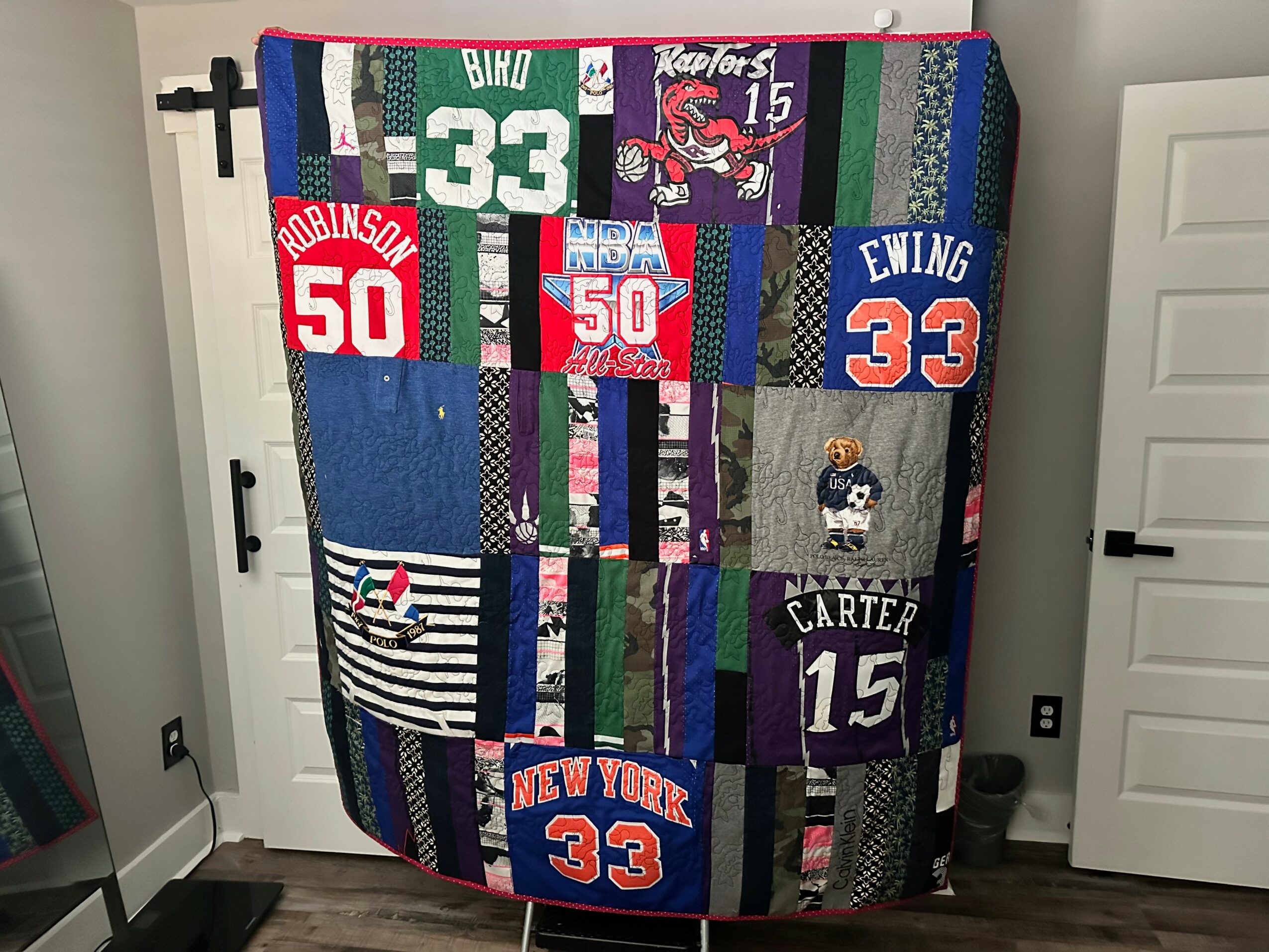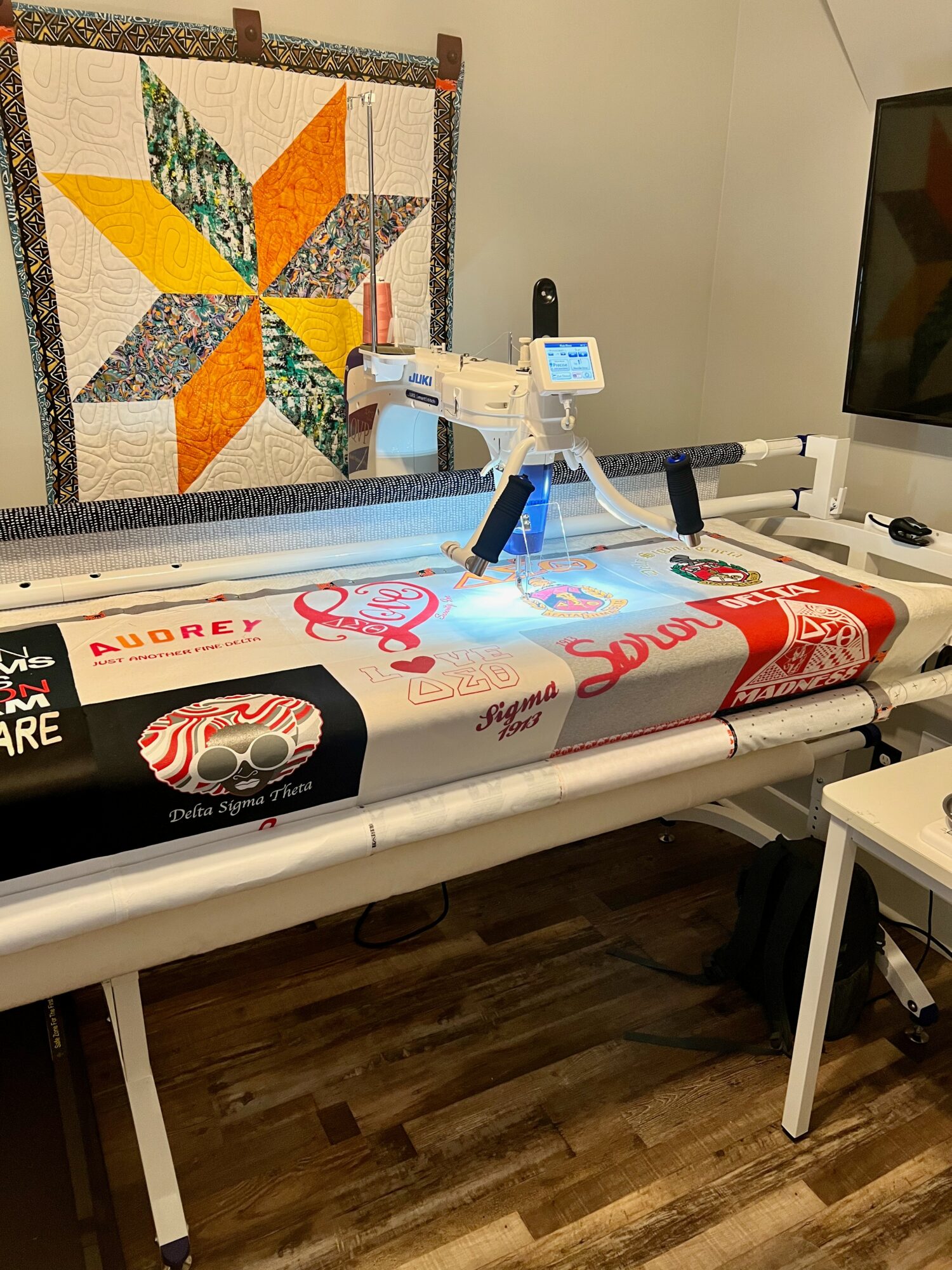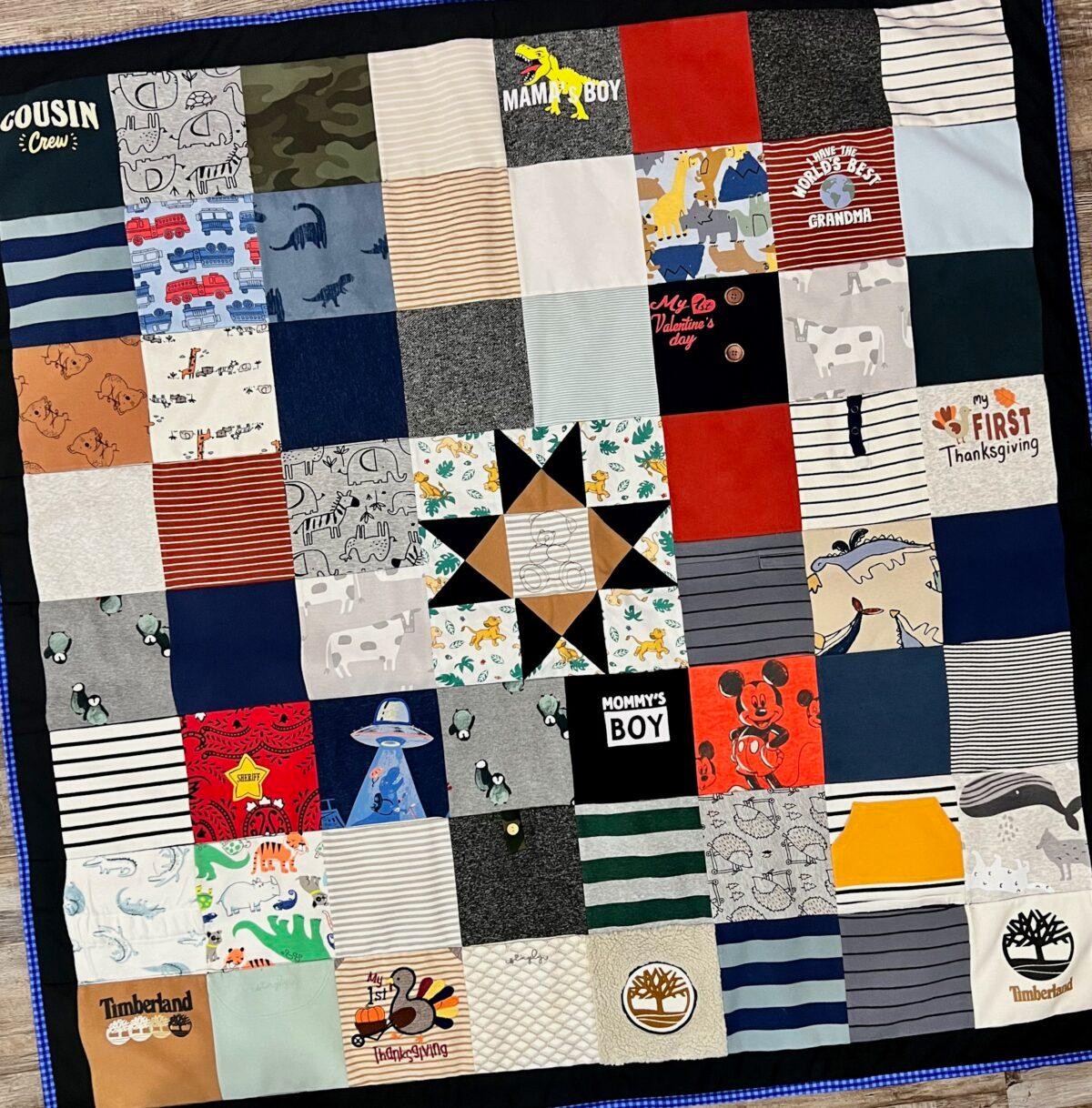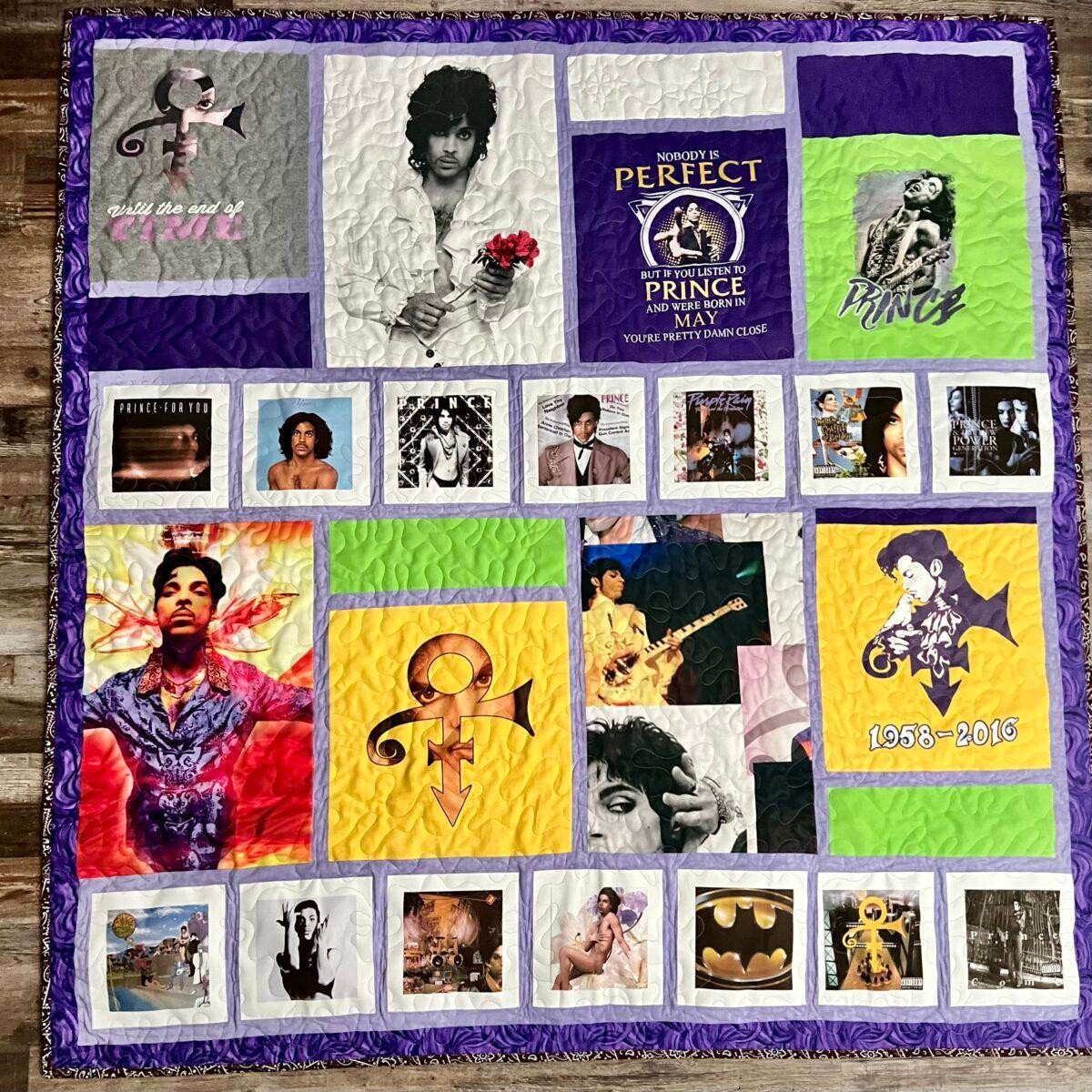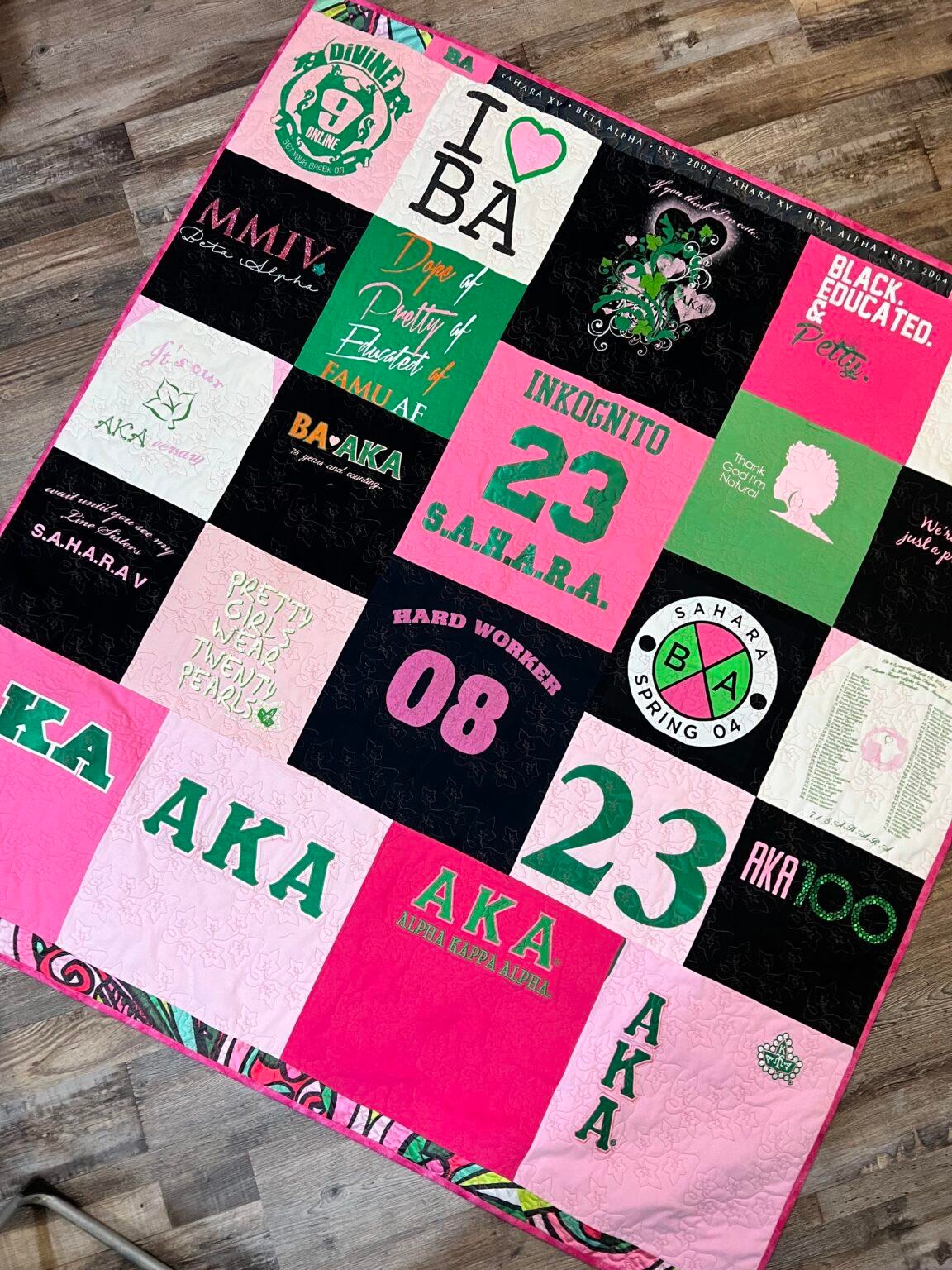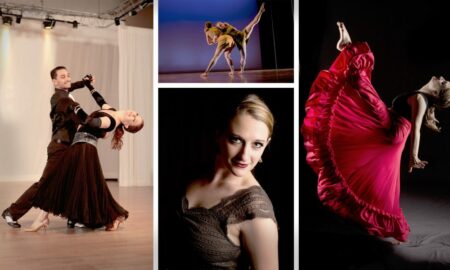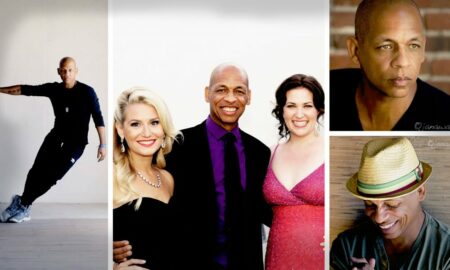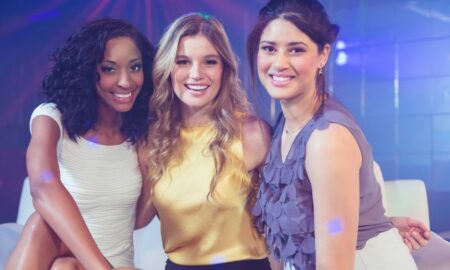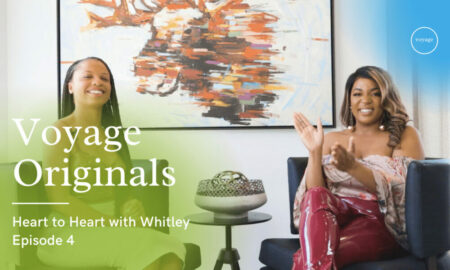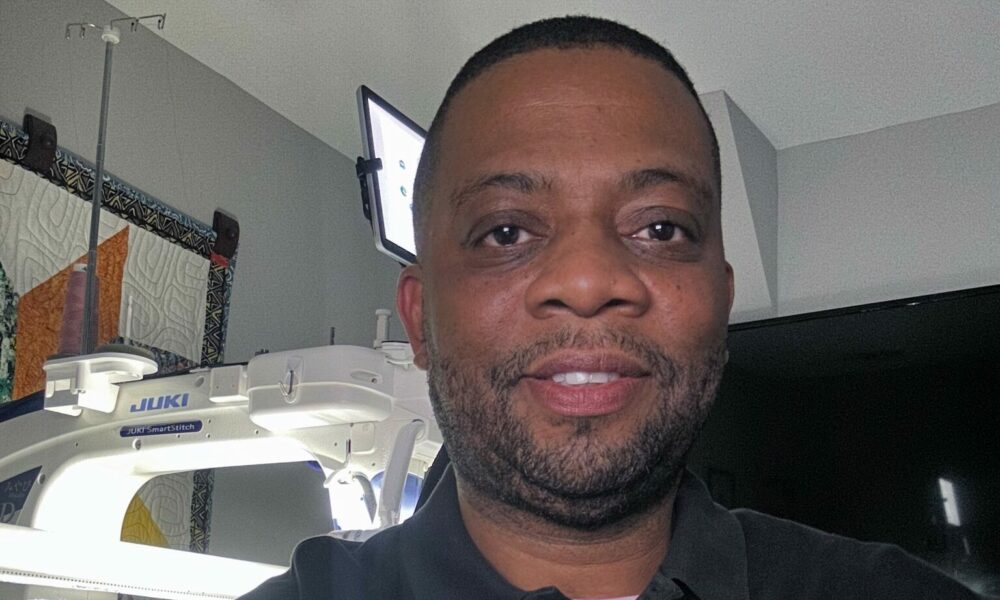

Today we’d like to introduce you to Wesley Hall.
Wesley, we appreciate you taking the time to share your story with us today. Where does your story begin?
Several years ago, I stumbled upon a book called “Hidden in Plain View: A Secret Story of Quilts and the Underground Railroad”, which examined the legend of specific patterns made in quilts to guide passengers along the Underground Railroad. I decided to try and recreate some of these quilt patterns on a whim, and my love for quilting was born.
Whether quilts were used on the Underground Railroad is debatable, but today, I make quilts to tell stories and to convey feelings. For me, making a quilt is like a musician making a song. Quilts, like music, have structure and feeling, and they can make a statement. My specialty is making Memory Quilts for people to honor and preserve memories of their loved ones. Parents, grandparents, spouses, etc., will trust me with clothes from their loved ones, and I will transform those items into quilts that reflect the individual personalities of their loved ones.
Before I start on a quilt, I spend time a good deal of time talking to the person I am making the quilt for. Together, we reflect on the person the quilt honors, and I listen for the things that make this person unique. I channel the stories and energy from that person into the design of the quilt. Memory Quilts are sometimes therapeutic, sometimes nostalgic, and almost always emotional. I truly believe making Memory Quilts is a mission for me and that my Memory Quilts offer a way for people to wrap themselves in a special moment in time.
Would you say it’s been a smooth road, and if not what are some of the biggest challenges you’ve faced along the way?
I have always been somewhat obsessed with order and symmetry. I love things – anything and everything – lined up and ordered in very clean lines. Lining up the blocks in my quilts and having perfect lines is a self-imposed struggle that I still battle. Veteran quilters will tell you that a finished quilt is much better than a perfect quilt. I have to tell myself that over and over. Quilters also say that our humanity should show through our quilts, meaning that every stitch on a lovingly handmade quilt should not look like it came from a factory. Worrying how a quilt will touch and please its recipient will probably always give me a good bit of anxiety,
Appreciate you sharing that. What else should we know about what you do?
The thing that is most peculiar about me being a quilter is the thing I love the most. Arguably, there are not many 6’2″ Black guys who make traditional block quilts. I am instantly recognizable when I am at a conference, attend a quilt class, or at one of my local quilt stores. Store owners and fellow quilters greet me with “Hi Big Wes” all over Atlanta. In 2021, I attended a quilt retreat in Alabama. I was the youngest, the only male, and the only Black person there. It was one of the best experiences of my quilting life. I fully recognize I am treated as somewhat of a novelty, but that’s good. I exist to build bridges.
As I said earlier, my specialty is making Memory Quilts for people to honor and preserve memories of their loved ones. Parents, grandparents, spouses, etc., will trust me with clothes from their loved ones, and I will transform those items into quilts that reflect the individual personalities of their loved ones.
Memory Quilts are a tremendous responsibility for me because the items I will transform into quilts are almost always irreplaceable. A wife who hands me a shirt that her husband wore before he passed away will not be able to get another shirt like that again. A mother who gives me onesies her children wore when they were babies will not be able to get those onesies again. I do not take my responsibility lightly, and the care I put into every article I touch is why I think people seek me out.
Are there any apps, books, podcasts, blogs or other resources you think our readers should check out?
There are so many fantastic quilt artists, both famous and unknown, from whom I draw inspiration. I look at Bisa Bulter’s work, and I still can not wrap my mind around how so much talent lives in one person. I saw Bisa’s “Harriet Tubman” Quilt in The National Museum of African American History and Culture in DC and stared at it in amazement. My online quilting guru is Leah Day. Leah is a top-level YouTuber, and I have learned countless techniques by watching her.
When I am not absorbing quilting techniques and information, my favorite podcasts are Atlas Obscura, 99 Percent Invisible, and Revisionist History. I have always loved understanding what is below the surface of our everyday lives, and these podcasts offer new perspectives on our world.
Contact Info:
- Website: bigwes.com
- Instagram: instagram.com/quiltsbybigwes
- Facebook: facebook.com/quiltsbybigwes
- Other: tiktok.com/@quilts_by_big_wes
